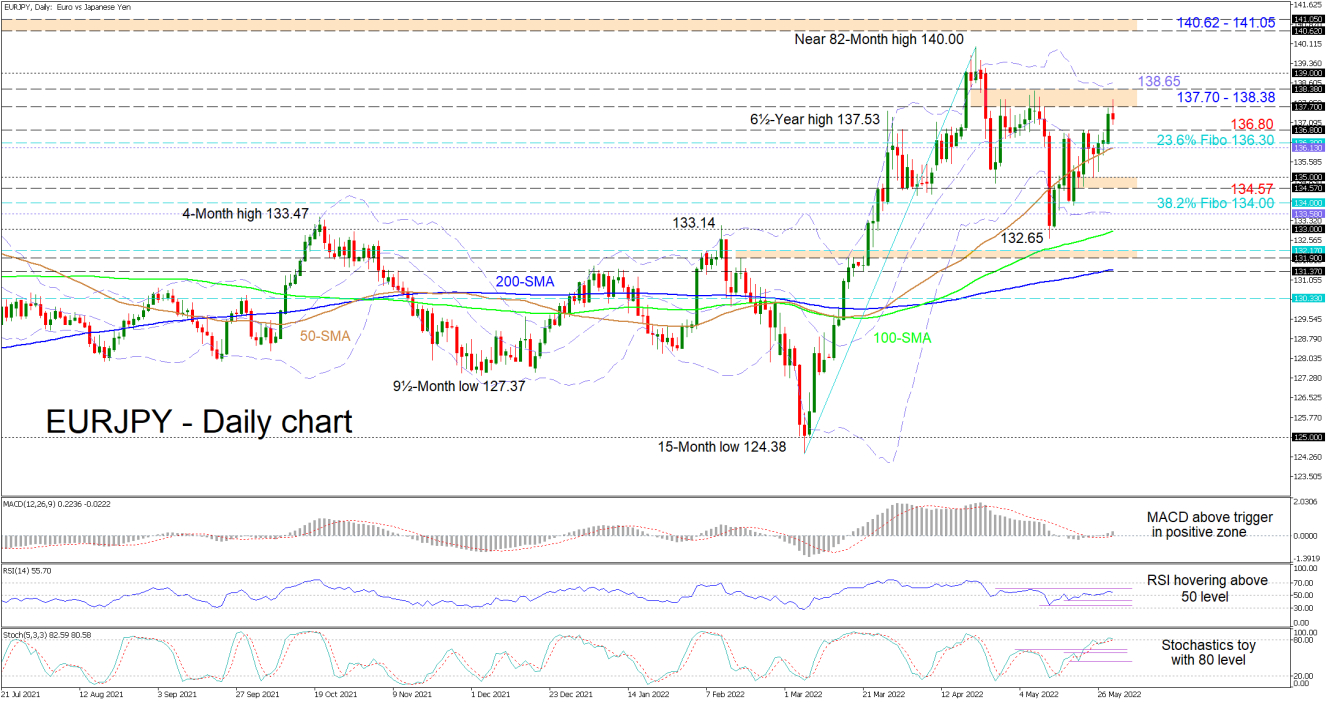Despite the waning in positive forces, the advancing simple moving averages (SMAs) are backing the bullish structure.
The short-term oscillators are suggesting buyers are in control but are reflecting the latest weakness in upside momentum around the 137.70-138.38 resistance section. The MACD is slightly north of the zero threshold and is holding above its red trigger line, indicating positive forces have yet to fully subside. Meanwhile, the minor dip in the RSI in the bullish region and the shaky positive charge of the stochastic lines around the 80 overbought barrier both imply that sellers may retake the reins.
In the positive scenario, immediate heavy resistance is emanating from the 137.70-138.38 region, which currently includes the May highs and is being reinforced by the upper Bollinger band at 138.65. If buying pressures increase and pilot the price beyond the adjacent upper Bollinger band at 138.65, the 139.00 hurdle could impede additional gains from revisiting the more than 6½-year peak of 140.00. Should the 140.00 border fail to calm buying interest, the 140.62-141.05 resistance band that extends back to the June 2015 rally peaks could then draw traders’ focus.
Otherwise, if the 137.70-138.38 barricade manages to mute upside pressures, support could arise from the 136.80 inside swing high ahead of the 136.30 mark, which is the 23.6% Fibonacci retracement of the up leg from 124.38 until 140.00. Should selling interest overwhelm, the converged mid-Bollinger band and the rising 50-day SMA at 136.13 may then be overrun with the bears targeting the zone of support between the 135.00 barrier and the 134.57 low. Sinking further, the space from the 38.2% Fibo of 134.00 until the lower Bollinger band at 133.58 could try to halt further deterioration in the pair towards the 100-day SMA at 133.00 and the 132.65 trough.
Summarizing, EURJPY is exhibiting a bullish bearing above the SMAs and the 134.57-135.00 boundary. A climb north of the upper Bollinger band could bolster buyers’ confidence, while a dive extending below the 38.2% Fibo may trigger worries about returning negative tendencies.


